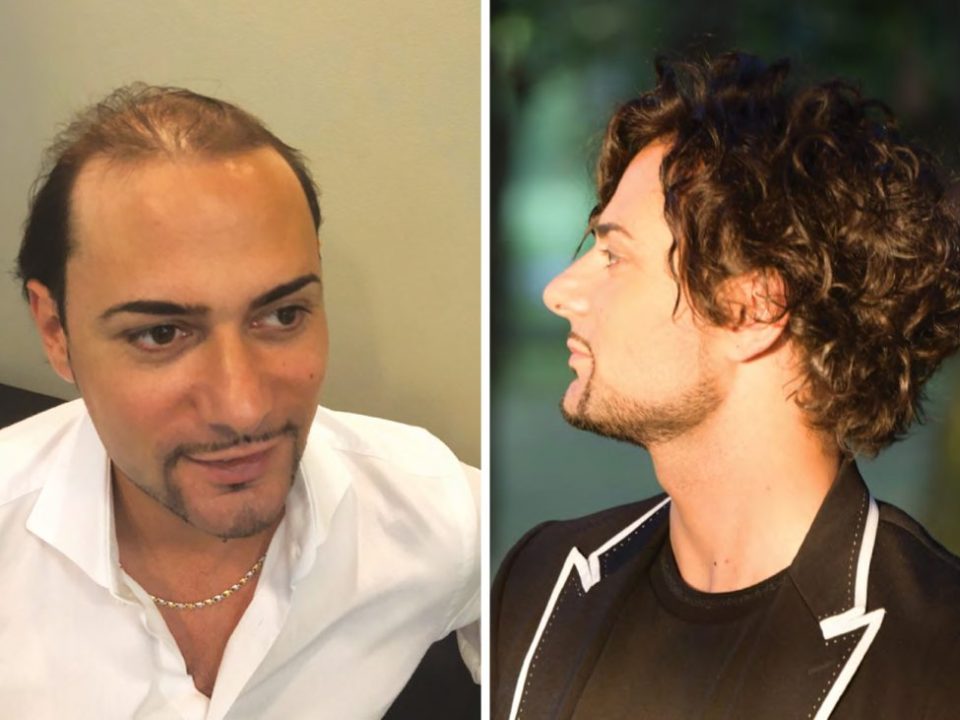Why Am I Losing My Hair?

Understanding the Most Common Causes of Hair Loss
Hair loss is a frustrating and sometimes overwhelming experience that affects millions of people around the world. If you’ve noticed significant thinning or balding on your scalp, you’re not alone. Whether your hair loss is due to genetics, medication, or age, losing hair can affect one’s self-esteem and confidence. Luckily, non-surgical hair replacement systems are now available and can help in restoring a full head of hair.
The most common form of balding and hair loss in men and women is called androgenetic alopecia, or hereditary pattern baldness. It affects millions of men and women worldwide. Genetic related hair loss can come from either side of your family. Here are some of the most common causes of hair loss and how you can address each one.
1. Alopecia
Alopecia is an autoimmune disease that causes hair loss in patches. This condition occurs when the immune system mistakenly attacks healthy hair follicles, causing hair to fall out. While alopecia can affect anyone, it’s most commonly diagnosed in adolescents and young adults. If you suspect that you have alopecia, you should consult a dermatologist or hair loss specialist to develop a personalized treatment plan.
2. Folliculitis
Folliculitis is an inflammation of the hair follicles that can lead to hair loss. This condition can be caused by bacterial, fungal, or viral infections, and it typically affects hair-bearing areas of the body like the scalp, beard, or chest. If left untreated, folliculitis can lead to scarring and permanent hair loss. To treat folliculitis, your physician may prescribe antibiotics, antifungal medication, or other topical treatments.
3. Chemotherapy
While chemotherapy is an effective treatment for cancer, it can also cause hair loss as a side effect. Chemotherapy drugs are designed to target rapidly dividing cells, including cancer cells and hair follicles. As a result, many people who undergo chemotherapy experience significant hair loss. Hair loss from chemotherapy is typically temporary, and most people will see regrowth within 6-12 months after treatment.
4. Trichotillomania
Trichotillomania is a mental health disorder characterized by the compulsive urge to pull out one’s own hair. This condition can affect people of all ages, and it can lead to significant hair loss and scalp damage. Treatment for trichotillomania typically involves a combination of therapy, medication, and behavioral modifications.
Hair loss can occur for a variety of reasons, and it’s important to identify the underlying cause to develop an effective treatment plan. If you’re experiencing hair loss, speak with your doctor or a hair loss specialist to determine the best course of action for your specific needs. Whether you’re dealing with alopecia, folliculitis, chemotherapy-related hair loss, or trichotillomania, there are solutions available that can help you regain your confidence and your hair.
Hair Loss Solutions: What Can You Do?
Non-surgical hair replacement, whether it goes by that name, or is called a hair piece, a hair patch, or even a wig or topper, can help you regain a sense of normalcy and lead an active professional and social life. Today’s technically advanced hair replacement systems offer the appearance of a natural head of hair and is typically attached to the scalp using a medical-grade adhesive. It is the ideal solution for those who are experiencing partial hair loss or thinning in specific areas. The best thing about hair patches is that they can be customized to match the color, texture, and shape of one’s natural hair.
A modern hair replacement system can cover the entire scalp or just the affected area where thinning or hair loss is most noticable. Hair systems have become a popular option because they offer versatility in terms of styling and design. Since hairpieces are custom-made, they can be styled to match one’s personal style.
Non-surgical hair replacement systems are a great solution for those who want to avoid surgical hair restoration options. These systems are affordable, non-invasive, and offer immediate results. Moreover, non-surgical hair replacement systems do not require any downtime, unlike surgical hair restoration solutions.
In conclusion, non-surgical hair replacement systems such as hair patches and hairpieces are excellent alternatives to surgical hair restoration. These systems offer versatility, style, affordability, and immediate results. If you are experiencing hair loss, we invite you to talk to one of our non-surgical hair replacement specialists to find out which option works best for you.



